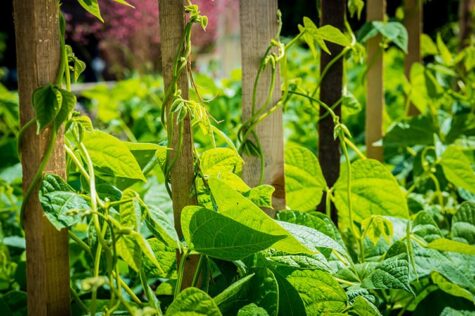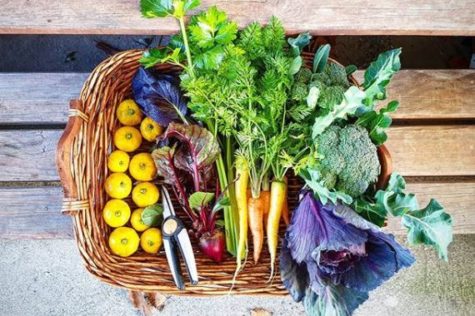Autumn raspberries are delicious to eat and easy to grow and harvest. Raspberry plants are fairly easy to care for and, if you’re thinking of adding autumn raspberry treats to your collection of edible plants, you won’t be disappointed.
Let’s take a look at everything you need to know to successfully plant, grow and harvest autumn raspberries.

Credit: Pixabay
What are autumn raspberries?
The small red or yellow raspberry fruits are produced by the primocane raspberry plant variety in autumn. These plants are shrubs belonging to the Rosaceae family. Autumn raspberries, along with summer raspberries, form part of the genus Rubus.
Raspberries are among the world’s most popular fruits. The plants can produce hundreds of raspberries every season. Autumn raspberries are often used in jams, smoothies and pies, to decorate cakes or eaten straight off the stem. Raspberries are also considered to be a superfood due to the amount of antioxidants and fibre they contain.
There are two groups of raspberries to choose from. Each group can also be subdivided into several different varieties. You can, of course, plant different varieties from both groups to extend the fruiting season.
You can choose from a variety of summer fruiting raspberries or floricanes (the most common raspberries) and everbearing raspberries (also called autumn raspberries) or primocanes that fruit from autumn into winter.
Raspberry bushes are self-fertile. This means you only need one bush to produce fruits. The flowers will attract pollinators like bees and butterflies to your garden which is an added bonus.
Raspberry bushes will flower about two years after planting, so if you planted a year old bush, you can expect fruits within one year of planting. Autumn raspberry plants usually prefer cooler climates, but there are a whole host of varieties available that can handle warmer climates as well.
When to plant raspberries
The best time to plant raspberries is in spring. Usually, new raspberry plants are purchased at the age of one year old. This means you’ll only need to wait one more year until the canes bear fruit.
Choose an area with full or partial sun. The more sun the plant gets, the more fruit will be produced. Once the ground thaws enough to work with, you can start thinking about planting your newly purchased raspberry plants.
If you’ll be transplanting potted plants, it’s best to wait until the threat of frost has passed. Frost will kill any newly planted raspberries before they have a chance to establish themselves. If you live in a mild climate, you can plant in late autumn. This will give the plants a head start, meaning earlier fruits.

Credit: Piqsels
How to plant raspberries
Raspberries are easy to grow plants, but before you can get to the caring part, you’ll first need to pick and prepare a planting site. Raspberries do best when planted in an area with full sun. Unlike most fruits, they will grow in a partially shaded spot, but the more sun your plant gets, the more fruit it will produce.
It’s also best to plant your raspberry in rich, well-draining soil. To achieve this, you can mix compost and sand with your existing soil. The compost will provide the plant with nutrients and the sand will ensure that the water drains well. The planting area also needs great air circulation but must be sheltered from strong wind. Also, make sure to plant far away from wild growing berries, this way you can avoid many of the common pests and diseases.
Once you’ve picked the perfect spot, it’s time to prepare the plant. Before you can plant raspberries, you’ll need to soak the roots in water for at least an hour or two. While the plants are soaking, prepare the spot by digging a hole big enough for the roots to spread. If you’re planting multiple plants, a trench might work better for you.
When the raspberries are ready for planting, make sure to keep the crown of the plant exposed when covering the roots with dirt. This goes for both bare root and potted transplants.
For multiple plants, make sure the canes are spaced at least 18 inches apart. If you’re planting multiple rows, make sure to dig the trenches at least 4 feet apart. Doing so will give the plants plenty of space to grow and mature into healthy raspberry bushes.
Once you’ve finished planting, cut the canes down to about 9 inches above ground level. Doing this will encourage new growth. Make sure to prepare a trellis or something similar for the plant to climb on. Many raspberry bushes need some support to stay upright. A trellis will also expose more of the plant to light and airflow and encourage the plant to produce more fruits.
The autumn raspberry is generally self-supporting, but this plant really likes to climb if given the option. If you don’t have a trellis, plant it next to a fence or create a stand with two or more wires for it to climb on.

Credit: Alpha
How to grow autumn raspberries
Once your raspberries are planted and trimmed down, make sure to water them thoroughly. You can also place a thick layer of mulch around the base of the plant to smother any weeds and retain moisture in the soil. Raspberries may not like standing in water, but they don’t like drying out completely either.
To keep your plant healthy, water once a week. Add about an inch of water during each watering. Regular watering is much better for this plant than irregular deep soakings.
If you notice any canes growing well away from the rows, you can dig them up and plant them in another row. These new canes will eventually become fully grown raspberry plants. Moving the new canes to their own rows will help to keep everything neat and easily accessible.
You can add some compost for your raspberries at the start of the growing season. Work it into the existing soil to help your plants produce lots of fruits when the time comes. You can also use compost as mulch if you want the nutrients to be released slowly over time.

Credit: Maxpixel
Why raspberries should be pruned yearly
Raspberries are usually planted as one-year-old plants. These plants need to be pruned once a year starting one year after planting to keep the plant looking great. Yearly pruning will also result in more fruit production.
Summer raspberries usually produce fruits on two-year-old canes. That is why they are called floricanes. After the fruits are harvested the canes die. These canes need to be pruned to allow new shoots to grow and thrive.
Autumn raspberries on the other hand produce fruits on new canes. That is why they are called primocanes. These raspberries are much easier to care for.
Trimming away old stalks creates space for the new stalks and triggers vigorous growth. As a result, you will have more fruit-producing canes the next year. Pruning will also keep your plants looking neat without any unnecessary dead material in the mix.
How to prune autumn raspberries
Pruning is very easy when it comes to autumn raspberry plants. Simply cut the whole plant down to the ground, or burn the canes. Autumn raspberries produce fruit on new shoots, so removing old canes will result in more fruits.
Summer raspberries are more of a challenge. Since they produce fruits on old wood that dies afterwards, you will need to pick out the dead canes and snip them off at ground level. Make sure not to cut away any new canes.
If you want your autumn raspberries to produce fruit earlier, try trimming them in the same way as summer raspberries. Trim out any fruited canes and leave the younger, greener canes for the next season. These canes will produce fruit much earlier.
This is a great way to extend the fruiting period and spread out your raspberry crop. This means you won’t need to come up with creative storage techniques for hundreds of fruits.
How to harvest raspberries
Harvesting raspberries is one of the simplest things you can do. The hardest part is the identification of ripe fruits. Ripe raspberries come away from the plant easily, leaving the core behind. They also have quite a soft feel to them.
If you pick unripe berries, they won’t ripen once removed from the plant so try to avoid this if you can. When harvesting, use a shallow container that can only take three or four layers of fruit. This will prevent the bottom fruit from becoming squished.
It’s best to harvest ripe berries, even when they become overripe. Berries left on the plant will rot which causes unripe fruits to ripen more slowly.

Credit: Maxpixel
Raspberry uses and how to store them
Raspberries are best eaten when just picked. They don’t keep very well and should be used as quickly as possible. Harvested raspberries will generally only last about three days in a fridge.
Raspberries freeze brilliantly so if you can’t use all the raspberries that quickly, freeze them for future use. Slightly unripe berries are best stored this way since they don’t continue to ripen when picked.
You can use raspberries to make a variety of sauces and other delicacies. Slightly unripe raspberries are especially good for this purpose. You can also create raspberry jam or use them as fresh decorations on cakes.
If you have a whole lot of frozen berries, try putting them in drinks instead of ice. You can also make smoothies with these delicious frozen treats.

Credit: Rawpixel
FAQs
When should I buy autumn raspberries?
Bare root plants are generally only available from autumn to early spring, but potted varieties may be available for longer. Make sure not to plant raspberries in winter, however. Planting in early spring or autumn is best. Make sure the threat of frost has passed before planting in spring.
What are the best autumn raspberry varieties?
- Autumn bliss
- All gold
- Joan J
- Polka
Can raspberry bushes be planted in the autumn?
Yes, as long as you give them enough time to become established before any frost sets in. If your plants didn’t quite make it, you will need to protect them from frost while they slowly establish themselves.
You Might Also Like: 12 Best Plants For an Autumn Garden
Do you need to support autumn raspberries?
No, autumn raspberries are generally self-supporting. They do best when given a trellis or something similar to climb on, however. Doing so will also expose more of the plant to sunlight which means more fruit.
How to prepare raspberry bushes for the winter
Autumn raspberry bushes can be simply trimmed down to the ground. If you want earlier fruit, leave the younger canes to grow. Add some fertiliser to the soil and leave the plants to do their thing.

Save this pin for later






